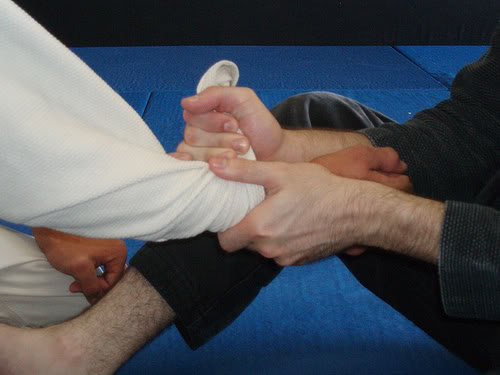
Grip play very important role in Brazilian Jiu jitsu. Most of time grip is the very first point of engaging with your opponent. if you have strong grip, then you will able to hold your opponent firm and then its more likely end up in the more dominant position.
These are the common grips which using in with Brazilian Jiu Jitsu
Hook grip – grip the cuff of your partner’s gi sleeve from the outside by grabbing excess material and tucking it into the cuff with four fingers
Pistol grip – grip the excess fabric of the sleeve or pant leg similar to the way you would grasp the handle bar of a bicycle. Either place your hand on the outside of the sleeve or use a cross grip.
Two-on-one – a cuff grip with an additional grip of the excess material at the elbow on your opponent’s arm.
Lapel and sleeve – One hand grips the lapel while the other hand grips the sleeve.
How to Train Grip Strength
There are several different ways to train grip strength:
Climbing :
Rope climbing, using progressive difficulty as well as timed holds, is great for gi and no-gi grip strength due to the girth of the rope. Another great way to improve grip is rock climbing. Not all of the grips used in rock climbing are similar to those used in BJJ, but they do help to increase hand and forearm strength.
Hanging :
Using a vertical bar, hang from two hands. Once you can do that for 60 seconds, switch to hanging from one hand until you can hold it for 60 seconds each, from there, switch to a towel or a gi with both hands, then one hand. Fold the gi or towel over for a thicker grip and repeat the same sequence until you can hang from a thickly folded gi with one hand for 60 seconds. At that point, you will have the grip of a superhero.
Holding :
Hold weight for 60 seconds with a dumbbell in each hand, increasing the weight as your strength builds.
Pulling :
Pulling is a great way to increase grip strength, but usually the focus of pulling exercises is on other body parts, with the grip being secondary. Pulling exercises include deadlifts and rows. The other types of grip work will greatly benefit these lifts.
After a recent injury, I had to do deadlifts wearing a thick cast, which immobilized my thumb. It made me realize how much support the thumb provides. For days afterwards my forearm was sore from using the hook grip. The two most frequently used grips in BJJ are the hook grip without the thumb and the typical grip with thumb support. When training grips, you can alternate weekly.
Technical drills :
A good drill for grips is to grip your partner’s gi in various places like the sleeve or the lapel and have him or her strip your grip. Switch from offense to defense.
After you do so , most of time you get aches and pains on you forearms . best way to get relief of it , do a self massage .
You can try out following
• Roll the forearm over a tennis ball on a hard surface to release muscle tension.
• Apply some lotion on the arm, lay it on a flat, firm surface and use your opposite elbow to strip the muscles.
• Self-massage devices such as The Stick or the Forearm Rx.
• Hold your arm straight out in front of you with your hand in the upright position and gently pull your fingers back with your other hand. Repeat with the wrist down holding 30 seconds each.
There are more grips other than this , here we have listed few .
Note by
T.W.K. Ratnayake
Brazilian Jiu Jitsu Sri Lanka
